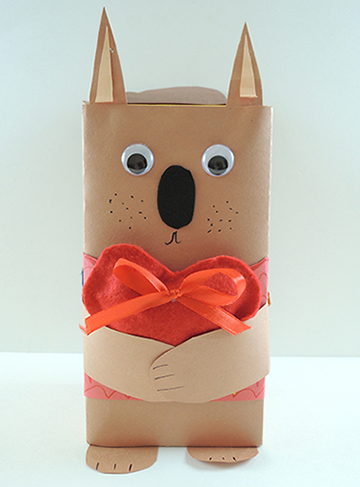 Have a reluctant reader who might appreciate good race? This simple project will get them raring to read letters and words with the assistance of their own personal reading robot! Built out of things in your home or office, it’s low tech, but high levels of F-U-N!
Have a reluctant reader who might appreciate good race? This simple project will get them raring to read letters and words with the assistance of their own personal reading robot! Built out of things in your home or office, it’s low tech, but high levels of F-U-N!
You’ll need:
- 1 paper cup
- 1 small ball
- 1 piece of tin foil or sparkle stem
- Pens or markers
- Post-it notes
Flip the cup upside down, then decorate your robot with markers (we went a little fancy with silver circular file labels and eye stickers). Add tin foil or sparkle stem antennae. When you’re finished designing, place your robot cup on top of a ball. We used a squishy foam ball, but a tennis ball works great too!
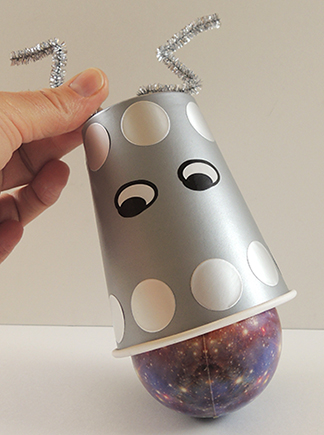 Next, write alphabet letters on Post-it notes and stick them to a tabletop. Have the reader and their robot sit on the opposite side of the table. As you call out the letter, they can slide and release their robot towards the proper Post-it!
Next, write alphabet letters on Post-it notes and stick them to a tabletop. Have the reader and their robot sit on the opposite side of the table. As you call out the letter, they can slide and release their robot towards the proper Post-it!
There are plenty of variations on this game. The robots can read single letters, words, finish sentences, and seek out synonyms. They’re also multilingual if you’re trying to learn a new language. Or you can go multiplayer and race other robots in a full scale demolition derby!

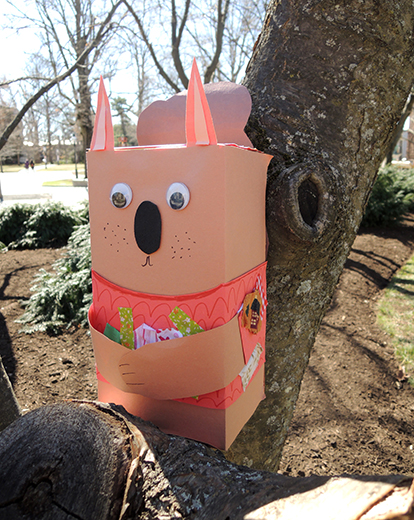 Spring might just be around the corner, but there’s still time to bust out a cozy, super snazzy sweater. Especially if you’re a squirrel with a celebration to get to!
Spring might just be around the corner, but there’s still time to bust out a cozy, super snazzy sweater. Especially if you’re a squirrel with a celebration to get to!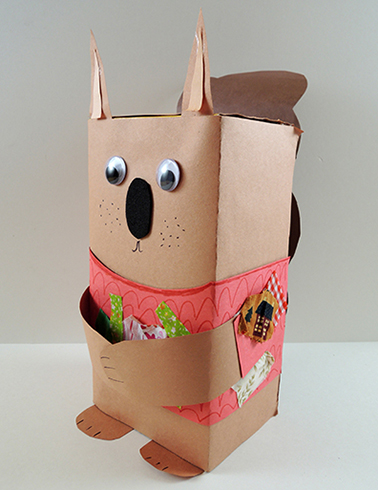 To make the squirrel’s sweater extra dynamic, we offered a variety of colorful fabric squares for texture. We also attached wiggle eyes and a self-adhesive foam nose, but those are just as easy to draw on with markers.
To make the squirrel’s sweater extra dynamic, we offered a variety of colorful fabric squares for texture. We also attached wiggle eyes and a self-adhesive foam nose, but those are just as easy to draw on with markers.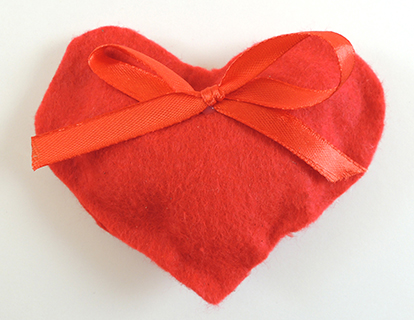 The heart pillow slides right into squirrel’s arms for a sweet hug, just like the story! Aww!
The heart pillow slides right into squirrel’s arms for a sweet hug, just like the story! Aww!